- Clone
- W18245A (See other available formats)
- Regulatory Status
- RUO
- Other Names
- Metavinculin, MV, Epididymis Secretory Sperm Binding Protein, Epididymis Luminal Protein 114
- Isotype
- Rat IgG2a, κ
- Ave. Rating
- Submit a Review
- Product Citations
- publications
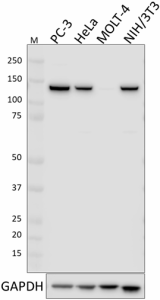
-

Whole cell extracts (15 µg protein) from PC-3, HeLa, MOLT-4 (reduced expression control), and NIH/3T3 cells were resolved by 4-12% Bis-Tris gel electrophoresis, transferred to a PVDF membrane, and probed with 1.0 µg/mL (1:500 dilution) of purified anti-Vinculin antibody (clone W18245A) overnight at 4°C. Proteins were visualized by chemiluminescence detection using HRP goat anti-rat IgG antibody (Cat. No. 405405) at a 1:3000 dilution. Direct-Blot™ HRP anti-GAPDH antibody (Cat. No. 607904) was used as a loading control at a 1:25000 dilution (lower). Lane M: Molecular weight marker. Predicted VCL expression data was obtained from Human Protein Atlas. -

HeLa cells were fixed with 4% paraformaldehyde for 10 minutes, permeabilized with ice-cold methanol for 10 minutes, and blocked with 5% FBS for 60 minutes. Cells were then intracellularly stained with 5.0 µg/mL (1:100 dilution) of either purified rat IgG2a, κ isotype ctrl antibody (Cat. No. 400501) (panel A) or purified anti-Vinculin antibody (panel B) for two hours at room temperature, followed by incubation with Alexa Fluor™ 594 goat anti-rat IgG (Cat. No. 405422) at 2.0 µg/mL. Nuclei were counterstained with DAPI, and the image was captured with a 60X objective. -

Whole cell extracts (250 µg total protein) prepared from HeLa cells were immunoprecipitated overnight with 2.0 µg of purified rat IgG2a, κ isotype ctrl antibody (Cat. No. 400501) or purified anti-Vinculin antibody (clone W18245A). The resulting IP fractions and whole cell extract input (6%) were resolved by 4-12% Bis-Tris gel electrophoresis, transferred to a PVDF membrane, and probed with a rabbit control antibody raised against a separate epitope of Vinculin. Lane M: Molecular weight marker. -

IHC staining using purified anti-Vinculin (clone W18245A) on formalin-fixed paraffin-embedded human heart tissue. Following antigen retrieval using 1X Tris-Buffered Saline (final concentration 0.05M) with Tween-20 (Cat. No. 925501), the tissue was incubated with (B) or without (A) 10 μg/mL of antibody overnight at 4°C, followed by incubation with 2.5 μg/mL of Alexa Fluor® 647 goat anti-rat IgG (Cat. No. 405416) for one hour at room temperature. Nuclei were counterstained with DAPI (blue) (Cat. No. 422801), and the slide was mounted with ProLong™ Gold Antifade Mountant. The image was captured with a 40X objective. Scalebar = 50 μM
| Cat # | Size | Price | Quantity Check Availability | Save | ||
|---|---|---|---|---|---|---|
| 938401 | 25 µg | 81€ | ||||
| 938402 | 100 µg | 203€ | ||||
Vinculin is a filamentous actin (F-actin) binding protein that was originally described as a critical component of focal adhesion plaques. It plays an important role in the transmission of mechanical forces, stabilization of cell-cell junctions via a direct interaction with α-catenin, and linking of integrins to the actin cytoskeleton. Loss of Vinculin protein expression contributes to metastatic phenotypes in cancer tissue due to loss of cell-cell adhesion. Vinculin has been isolated from prostate cancer exosomes and may serve as a biomarker for the progression of taxane-resistance prostate cancers; it is also a common marker for cell-cell and focal adhesion junctions.
Product DetailsProduct Details
- Verified Reactivity
- Human, Mouse
- Antibody Type
- Monoclonal
- Host Species
- Rat
- Immunogen
- Partial recombinant human Vinculin protein
- Formulation
- Phosphate-buffered solution, pH 7.2, containing 0.09% sodium azide
- Preparation
- The antibody was purified by affinity chromatography.
- Concentration
- 0.5 mg/mL
- Storage & Handling
- The antibody solution should be stored undiluted between 2°C and 8°C.
- Application
-
WB - Quality tested
ICC, IP, IHC-P - Verified - Recommended Usage
-
Each lot of this antibody is quality control tested by western blotting. For western blotting, the suggested use of this reagent is 0.1 - 1.0 µg/mL. For immunocytochemistry, a concentration range of 1.0 - 5.0 μg/mL is recommended. For immunoprecipitation, the suggested use of this reagent is 2.0 µg/test. For immunohistochemistry on formalin-fixed paraffin-embedded tissue sections, a concentration range of 5.0 - 10.0 µg/mL is suggested. It is recommended that the reagent be titrated for optimal performance for each application.
- Application Notes
-
This clone was tested for ICC using HeLa cells fixed with 4% PFA and permeabilized with Triton X-100 or methanol. While methanol permeabilization was compatible with Vinculin staining, Triton X-100 permeabilization resulted in dim staining. We therefore do not recommend Triton X-100 as a permeabilization method.
While this clone passed IP testing, it failed to quantitatively enrich Vinculin from whole cell extracts and may not be suitable for detecting transient or low-abundance protein-protein interactions by co-immunoprecipitation.
This clone is predicted to recognize Metavinculin due to complete sequence homology between the immunogen and the corresponding region of Metavinculin. - RRID
-
AB_2876761 (BioLegend Cat. No. 938401)
AB_2876761 (BioLegend Cat. No. 938402)
Antigen Details
- Structure
- Vinculin is a 1,066 amino acid protein with a predicted molecular weight of 116 kD. Metavinculin is a 1,134 amino acid protein with a predicted molecular weight of 124 kD.
- Distribution
-
Ubiquitously expressed/cytosol, cytoskeleton, and focal adhesion plaques; Metavinculin expression is restricted to smooth skeletal muscle tissue.
- Function
- Cell-matrix and cell-cell adhesion
- Biology Area
- Cell Biology, Cell Motility/Cytoskeleton/Structure
- Molecular Family
- Cytoskeletal Proteins
- Antigen References
-
- Kawakami K, et al. 2015. Int J Oncol. 47:384-90.
- Geiger B, et al. 1980. Proc Natl Acad Sci U S A. 77:4127-31.
- Jockusch BM, et al. 1981. Proc Natl Acad Sci U S A. 78:3005-9.
- Gene ID
- 7414 View all products for this Gene ID
- UniProt
- View information about Vinculin on UniProt.org
Related Pages & Pathways
Pages
Related FAQs
Other Formats
View All Vinculin Reagents Request Custom Conjugation| Description | Clone | Applications |
|---|---|---|
| Purified anti-Vinculin | W18245A | WB,ICC,IP,IHC-P |
Customers Also Purchased
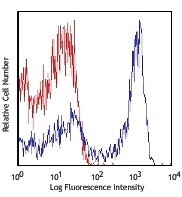
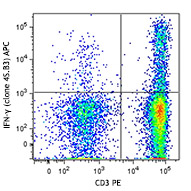
Compare Data Across All Formats
This data display is provided for general comparisons between formats.
Your actual data may vary due to variations in samples, target cells, instruments and their settings, staining conditions, and other factors.
If you need assistance with selecting the best format contact our expert technical support team.
 Login / Register
Login / Register 






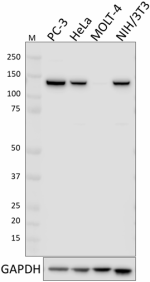

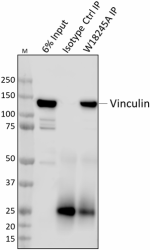




Follow Us